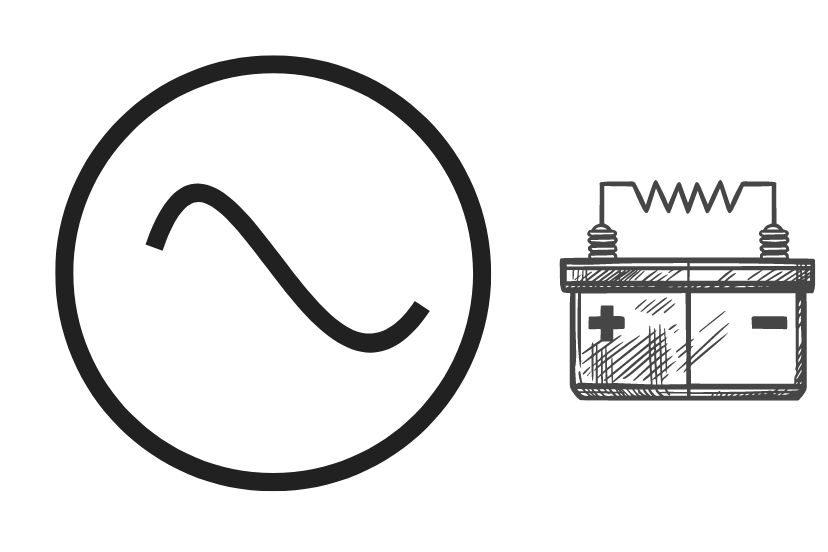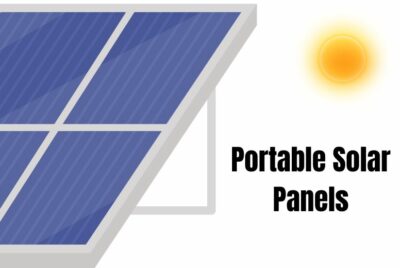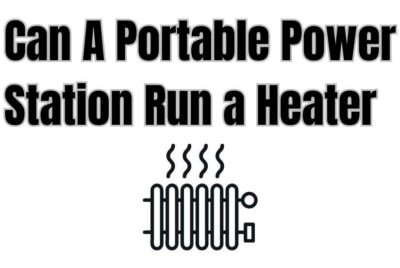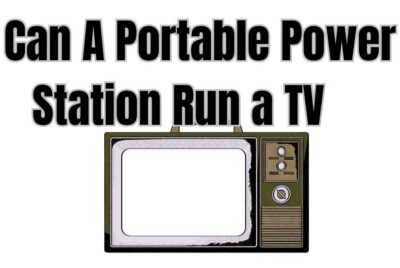What is an Inverter in a Portable Power Station?
I may earn a commission for purchases made through my links. It helps me run this site. Check out my disclosure for more details.
Inverters are one of the key components in a solar-powered power station. You will probably have heard about it, but what exactly does an inverter do?
Unlocking the Essentials
Portable power stations have not even been commercially available on the planet for a decade, yet they have exploded in terms of sales volume and have plenty of advocates in the camping, home power and solar energy fields. The global turnover for 2022 was 486 million dollars, and it is expected to jump to $545 million by the end of 2023. By the end of the decade, it is forecast to hit very close to the $1 billion mark. This article is going to focus on a very important component in your power station, the inverter.
The inverters in power stations provide clean and stable electricity, so your precious electronics and appliances don’t get fried with erratic voltage jumps. It converts DC (direct current) power captured by the solar panels into AC (alternating current) power, which can then be deployed by electronics, household appliances, and tools. They don’t work on DC power, so they have to be converted to a usable electricity source, in this case, AC.
So why don’t power stations just use AC to begin with so they don’t have to convert it from DC? Well, it’s all to do with the solar panels. They capture light as DC because the photovoltaic cells contain negatively charged electrons, which create current when stimulated by light. These electrons flow in one direction, which is classified as direct current.
The inverter’s job then is to convert DC over to AC so it can be used to run all our appliances and electronic gadgets. An inverter is more than just a simple converter; it manages the power output and matches it to the wattage requirements of each connected device.
Key Points About Inverter Technology
- A power station needs an inverter to turn DC electricity into AC
- Inverters also control the power delivery of electricity, making sure it is stable so it does not damage any connected devices or appliances
- The inverters in portable power stations operate at lower noise levels than traditional fuel generators; some operate less quietly than a conversation
- Portable power stations using this inverter technology can be used indoors and outdoors
Inverter Analysis
Portable power stations using several components:
- a battery
- an inverter
- charge Controller
- display
- connections ports: AC outlets, USB ports, DC ports, 6mm or Anderson pole connections
- Battery managements technology
After the inverter performs the conversion phase, the AC power can be used to supply electricity to anything with a plug, DC port, or USB connection. The beauty of power stations is that they can power you off-grid, alleviate the pressure on your home grid, and even be used as a backup generator if the grid fails. They are a true portable off and on grid solution, and that is why they are so popular.
AC Power vs DC Power
AC and DC power differ in the way that they flow. DC flows consistently in one direction, whereas AC periodically changes direction; remember, AC stands for Alternating Current, so it can flow one way or another. Just think about the wavy graph from school, and you’ll get the picture.
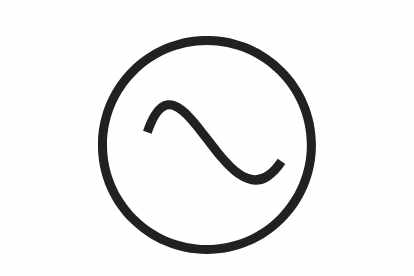
Most electronic devices, household appliances, and power tools run on AC power, mainly because AC is easier to distribute over long distances and can be conveniently transformed to various voltages.
That’s precisely why the inverter has to get involved, as, solar panels and rechargeable batteries produce DC power. The Inverter plays a crucial role in bridging this gap by converting the DC power from these sources into AC power, which can then be deployed for use.
Power Output and Voltage
When you want to start reviewing portable power stations and solar generators, here are the most important technical things to look for in the product, I’m not talking about budget here, just the capabilities of the solar generator kit or power station ( if you don’t need solar panels) you are going for.
- Inverter Power Output
- Voltage Output
- Inverter Surge & Continuous Power Capacity
- Battery Size: in particular, how many watt-hours it can store
- Battery recharge times
Looking at point 1, all inverters have a maximum power rating, which is how much power (watts) the inverter can continuously run. For example, it may be capable of continuously running connected appliances and devices up to 600 watts. So if you go over that, the power station will automatically shut down to prevent it from going into overload. This figure is also very important and a key buying decision factor because if you want to run appliances higher than 600 watts, say a 1000–1200 watt coffee machine, or want to plug in several devices that combined are rated higher than 600 watts, you need the right inverter. A small 500-watt inverter won’t even start up your appliances.
Addressing point 2 – the voltage rating is also an important factor, but thankfully most portable power station inverters are 110V or 220V, which makes them capable of powering household appliances. Now some smaller power stations, like the Takki T88, aren’t up to running household appliances, and they are only meant for charging up phones, tablets, and LED lights via their USB ports.
Then the SURGE or PEAK capacity is also very important because some appliances have a higher wattage start-up, which means when you switch them on, the power spikes momentarily to start the appliance up. If your portable power station doesn’t have a high enough PEAK rating, you won’t be able to run lots of appliances. Your power station only needs to be able to handle this peak for a brief period, after that, the appliance will settle down to a steady power output.
The continuous power output, which is the maximum amount of watts your machine can output, is also very important, as this determines what appliances you can run. So for example, if your coffee machine has a start-up PEAK of 1200W and then settles down to 600 watts when it is running, you need an inverter rated for:
- i: 1200W PEAK
- ii. 600W Continuous Output
Once you know what an inverter does (transfers DC to AC) and how it monitors and handles PEAK surge voltage spikes and continuous power output demands, you will be well positioned to pick the right solar generator kit, based on the inverter’s capabilities to power your needs.
Battery size is very important as it determines how long and what you can charge and run before the power station needs a recharge. Thankfully, portable power stations can be charged with solar panels, AC power, or cars, some can be charged using combinations of these. Some can also be charged with gas or other battery powered generators.
If you are only going to need a small bit of power for light use, like short camping trips or to use outdoors occasionally, you can opt for any power station under 300 watt-hours. You could even go smaller, like the 83 watt-hour powered Takki T88, if you want ultra portability that allows you to charge your iPhone to nearly full in 30 minutes. If you want something that is closer to the 300 watt-hour mark, and has plenty of connection ports to keep multiple household members or co-workers happy, look at the ultra fast charging Jackery E300 and the Bluetti EB3A.
If you want a full size professional solar generator rig that is able to work as a complete home backup and will be able to handle running 99% of household appliances, you need a 3-6,000 kWh rig. There are many, and you can even expand to over 20,000 kWh. Look at the Jackery 3000 PRO, Goal Zero YETI 3000X, the 6000X, the EcoFlow Delta PRO, EcoFlow Delta Max, or the HomePower 2 Plus by Geneverse. You can daisy chain lots of these batterries and power stations together like the Jackery explore 2000 plus and the Delta PRO by Ecoflow, and of course the Yeti’s by Goal Zero can be expanded with their expansion tanks.
The average home uses 21–29 kWh per day. So if you are going to go completely off-grid you need a massive solar generator system. One that can self charge. Realistically, most people will not run all their appliances as normal once a grid failure happens. But if you want to get away from grid only power, you can supplement your own power and feed it into your home circuits if you prefer, and this will reduce your energy costs. If you want to supply over 90% of your own energy, you could spend $20–30K on power stations, extra batteries, and solar panels.
Finally, battery recharge times can be the deciding factor, if you want something that charges fast, like EcoFlow or Bluetti, and the Jackery Pro models are head and shoulders above everyone else. Their batteries also have long life cycles, which is the number of times you can charge them from flat to full power before they start to fade. Normally, a long-lasting battery will have 2500+ life cycles before it starts to deplete. It will still keep going, and EcoFlow batteries can be charged over 6,500 times before they drop to 50% capacity. Good for years of use.
Fuel Inverter vs Battery Powered Inverter Generators
Fuel generators use an engine with an alternator to make electricity. A two-stage process occurs, the AC electricity is sent to a rectifier, which converts the power generated by the alternator into DV voltage. The inverter must then convert, or rather “invert” this back into AC power. Usually by a pure sine wave inverter. The reason this process occurs is because the AC power generated initially by the alternator would be too strong for household appliances and electronics to handle. They prefer a lower form of consistent THD power, which has a tendency not to spike, to keep them from being overloaded.
Apart from the technical difference, solar-powered inverter generators don’t use fuel, so not only are they clean and non-polluting, but they also provide free energy, provided you have enough sunshine and manage the power delivery intelligently. Another key bonus with solar-type generators is that you can operate them indoors, and they are much quieter than a fuel generator. They are also a firm favorite with the traveling and off-grid fraternity.
Disaster Relief Plan
One scenario where solar powered inverters excel is during times of disaster. The aftermath of a storm can be more dangerous than being right in the epicenter of it. If power cannot be restored quickly, anyone on essential oxygen equipment or who needs chilled medical supplies can be in serious peril. In the winter, heat can also be a problem. Fuel generators can work, but if there is a run on the filling stations and gas supplies have run out or the line has been damaged, fuel generators won’t be of any use.
A rechargeable solar battery-powered system combined with solar panels can pull you out of a jam and get your essential supplies and communication devices back up and running. Sometimes we forget the value of energy, whether it’s to provide air conditioning, heat, or to get our freezers and phones running. If you live in an extremely hot climate, it might be wise to invest in a solar generator system that can run an air conditioning unit.
Depending on the number of people in your household and what appliances and devices are essential to get up and running during a weather front or grid failure, you may wish to invest in a complete house solar generator, especially if power outages are a regular occurrence. You’ve heard of people installing nuclear bunkers because they are worried about world tensions. Well, how long can you power that bunker or house if a disaster or enemy strikes?
Solar generators are limited by their battery capacities, the amount of available sunlight, and the solar input wattage capacity (which dictates how many solar panels you can use to recharge your battery). The battery in a 3-6,000 kWh power station can take anywhere from 12 to 24 hours to charge, and longer if the sunlight is poor. So it’s wise to do some reading up on Jackery Pro, EcoFlow and Bluetti machines, as these can be recharged in a matter of hours if you add extra solar panels or batteries.
Final Thoughts On Inverters
Inverters play a key role in regulating clean power for your devices and appliances. They also convert DC to usable AC power. Pay attention to the surge and continuous running watts the inverter in the power station you are looking at can output. Models like EcoFlow can even boost their output wattage with its X Stream technology (although it doesn’t work on all appliances). Then you will know exactly what the inverter can run in your house, for how long, and also what it can’t run. From there, you will be able to make a better buying choice.

